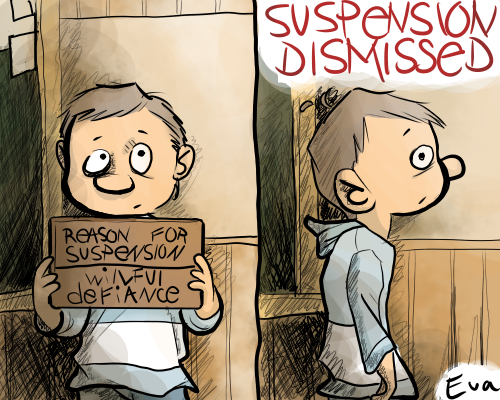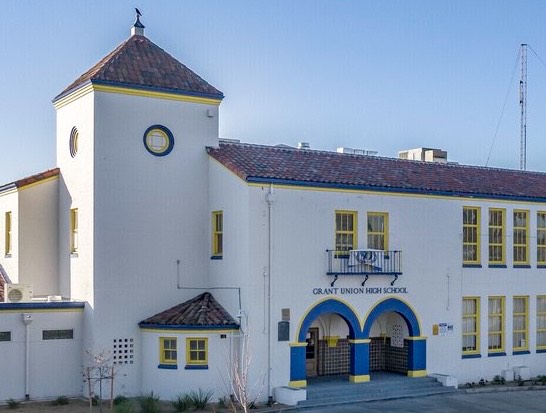A recent wave of school suspension reforms in California public schools is expanding this year – and more may be on the way.
California Senate Bill 274, which went into effect in July, builds on previous legislation by banning entirely school suspensions for acts of “willful defiance.” The new law, signed by Gov. Gavin Newsom last year, encompasses high school students in the suspension ban, whereas 2019 legislation only applied to elementary and middle school.
“Willful defiance” can include dress code infractions, excessive tardiness or refusing to follow teacher directions. Schools are still permitted to suspend students for fighting.
However, long before SB 274 was passed, many California school districts – including those in the Sacramento region – began exploring alternative discipline measures to reduce school suspensions.
The Los Angeles Unified School District replaced willful defiance suspensions with “restorative justice” more than a decade ago, which significantly reduced disparities in suspension rates. Suspensions dropped 75% in the following years as a result.
The San Juan Unified School District has already changed their suspension policy in accordance with SB 274. Earlier this year, the district conducted professional development training for administrators with an emphasis on “prevention and intervention with restorative practices” instead of punitive measures, district communications director Raj Rai said.
San Juan plans to continue discussing behavior response strategies in light of the new legislation.
“The (discipline) guidelines are designed to allow the school administration to assess incidents on an individual basis and to issue student discipline that is age-appropriate and based on a progressive discipline model,” Rai said.
But for many behavior infractions, suspensions are no longer one of the approaches.
Officials in the Sacramento City Unified School District said they are also working to minimize suspensions and transition to other discipline strategies.
“Sac City Unified is well prepared to implement this new legislation because we have been working diligently in recent years to identify and implement more restorative forms of student discipline that will keep students in school, and also address the negative and disproportionate impact of suspensions on students of color,” said Alexander Goldberg, a spokesperson for the district.
Potential alternatives to conventional punishment include increased education initiatives on the risks of drug use, additional training for school staff on how to respond and helping students access community health providers that can offer rehabilitation services.
Another piece of legislation from San Bernardino assemblymember James Ramos, AB 2711, aims to address the massive racial disparities in school suspensions. The bill would block suspensions for student drug use and require schools to employ a “public health approach” with preventative and treatment measures instead.
Students of color have long been suspended at far higher rates than their peers in California schools. According to the California Alliance of Child and Family Services, 82% of those suspended for drug infractions are students of color and nearly 60% are male students. Another 83% of those suspensions are issued to low-income students.
“When we suspend or expel students without trying to get them the help they need, we’re failing them,” Ramos said in an education committee hearing. “We can’t afford to keep losing kids without at least giving them the help they need first.”
His office did not respond to requests for further comment.
More broadly, supporters of the proposed legislation believe a non-punitive approach to the substance use crisis is more beneficial to students than immediately resorting to suspensions and expulsions.
“(The bill) offers a new way of hope, a chance to break free from the cycle of punishment and embrace a compassionate approach,” said Caleb Merill, a Sacramento Youth Action board member who struggled with substance use as a teenager.
No Sacramento-area school district has taken a position on the bill, although Kern County schools and the California Small School Districts Association have come out against it. Key proponents include the ACLU of California and the Los Angeles Unified School District.
Critics of the bill say they worry it would effectively give a free pass for drug use and that the reform goes too far. It would also add to school staffs’ already long list of responsibilities.
Nick Lutton, the Family Engagement Program Manager at Family Voices of California, said that “as a parent” he is opposed to the bill.
However, with a recent update in language, the bill would now prevent suspensions for students who “voluntarily disclose” drug use when looking for support or services – a notable change from the original proposal which encompassed all instances of drug use.
For the moment, it may not matter as AB 2711 was placed on the suspense file earlier in August, meaning it will not be brought up for consideration until after the next state budget is passed. The appropriations committee will review the legislation, and as with many other bills on the suspense file, it might never come to fruition.
But the larger movement to reform school suspension guidelines does not end with those bills. In 2021, state education superintendent Tony Thurmond released new guidance on suspensions: minimize attendance-related suspensions, use restorative justice and other methods first and only suspend students as a last resort.
AB 982 also required that students be provided with sufficient homework when they are suspended so as not to miss out on learning.
“As we now know, suspension can do more harm than good,” Thurmond said.










